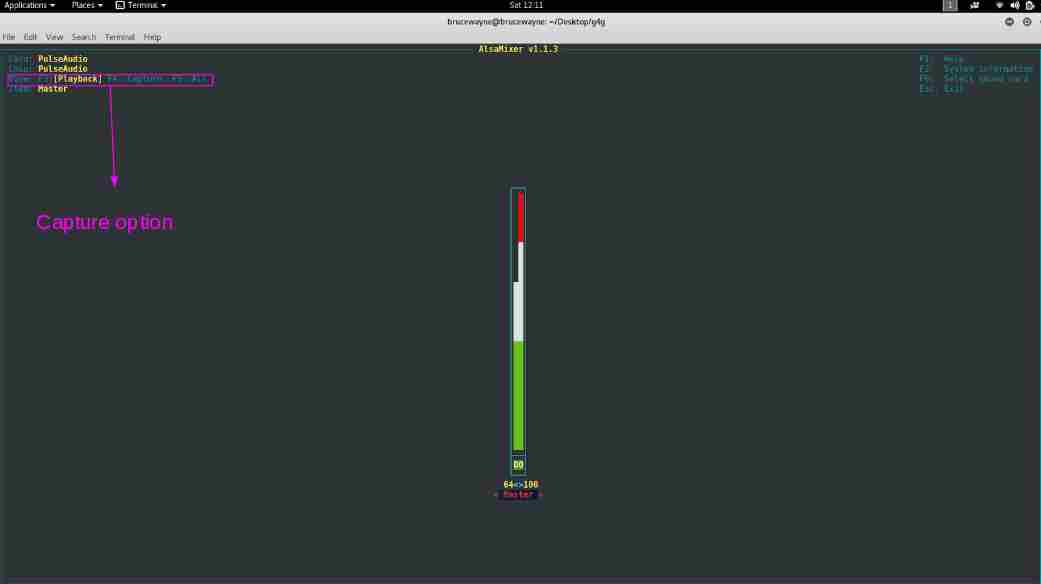先决条件—— 图 要使用内置库绘制图形—— Python中的图形绘制 在本文中,我们将看到如何使用 词典 python中的数据结构。 使用的字典键是图中的节点,对应的值是每个节点的列表,这些节点通过一条边连接。 这个简单的图有六个节点(a-f)和五条弧:
a -> cb -> cb -> ec -> ac -> bc -> dc -> ed -> ce -> ce -> b
它可以由以下Python数据结构表示。这是一个字典,其键是图的节点。对于每个关键点,对应的值都是一个列表,其中包含通过该节点的直弧连接的节点。
graph = { "a" : ["c"], "b" : ["c", "e"], "c" : ["a", "b", "d", "e"], "d" : ["c"], "e" : ["c", "b"], "f" : [] }
上述示例的图形表示:
defaultdict :通常,如果您试图获取一个当前不在Python字典中的项,则Python字典会抛出一个KeyError。defaultdict允许,如果在字典中找不到密钥,则不会抛出密钥错误,而是创建一个新条目。这个新条目的类型由defaultdict的参数给出。 用于生成图形的Python函数:
# definition of functiondef generate_edges(graph): edges = [] # for each node in graph for node in graph: # for each neighbour node of a single node for neighbour in graph[node]: # if edge exists then append edges.append((node, neighbour)) return edges
Python3
# Python program for # validation of a graph # import dictionary for graph from collections import defaultdict # function for adding edge to graph graph = defaultdict( list ) def addEdge(graph,u,v): graph[u].append(v) # definition of function def generate_edges(graph): edges = [] # for each node in graph for node in graph: # for each neighbour node of a single node for neighbour in graph[node]: # if edge exists then append edges.append((node, neighbour)) return edges # declaration of graph as dictionary addEdge(graph, 'a' , 'c' ) addEdge(graph, 'b' , 'c' ) addEdge(graph, 'b' , 'e' ) addEdge(graph, 'c' , 'd' ) addEdge(graph, 'c' , 'e' ) addEdge(graph, 'c' , 'a' ) addEdge(graph, 'c' , 'b' ) addEdge(graph, 'e' , 'b' ) addEdge(graph, 'd' , 'c' ) addEdge(graph, 'e' , 'c' ) # Driver Function call # to print generated graph print (generate_edges(graph)) |
输出:
[('a', 'c'), ('c', 'd'), ('c', 'e'), ('c', 'a'), ('c', 'b'), ('b', 'c'), ('b', 'e'), ('e', 'b'), ('e', 'c'), ('d', 'c')]
我们举了一个无向图的例子,所以我们把同一条边打印两次,比如(’a’,’c’)和(’c’,’a’)。我们可以通过使用有向图来克服这个问题。 下面是python中关于图形的更多程序: 生成从一个节点到另一个节点的路径 : 使用Python字典,我们可以在图中找到从一个节点到另一个节点的路径。这个想法类似于 DFS 在图表中。 在函数中,路径最初是一个空列表。在开始时,如果开始节点与结束节点匹配,函数将返回路径。否则,代码将前进并命中起始节点的所有值,并使用递归搜索路径。
Python3
# Python program to generate the first # path of the graph from the nodes provided graph = { 'a' : [ 'c' ], 'b' : [ 'd' ], 'c' : [ 'e' ], 'd' : [ 'a' , 'd' ], 'e' : [ 'b' , 'c' ] } # function to find path def find_path(graph, start, end, path = []): path = path + [start] if start = = end: return path for node in graph[start]: if node not in path: newpath = find_path(graph, node, end, path) if newpath: return newpath # Driver function call to print the path print (find_path(graph, 'd' , 'c' )) |
输出:
['d', 'a', 'c']
程序生成从一个节点到另一个节点的所有可能路径。 : 在上面讨论的程序中,我们生成了第一条可能的路径。现在,让我们生成从开始节点到结束节点的所有可能路径。基本功能与上述代码的功能相同。不同之处不是立即返回第一条路径,而是将该路径保存在一个名为“路径”的列表中,在下面给出的示例中。最后,在迭代所有可能的方法之后,它返回路径列表。如果没有从起始节点到结束节点的路径,则返回None。
Python3
# Python program to generate the all possible # path of the graph from the nodes provided graph = { 'a' :[ 'c' ], 'b' :[ 'd' ], 'c' :[ 'e' ], 'd' :[ 'a' , 'd' ], 'e' :[ 'b' , 'c' ] } # function to generate all possible paths def find_all_paths(graph, start, end, path = []): path = path + [start] if start = = end: return [path] paths = [] for node in graph[start]: if node not in path: newpaths = find_all_paths(graph, node, end, path) for newpath in newpaths: paths.append(newpath) return paths # Driver function call to print all # generated paths print (find_all_paths(graph, 'd' , 'c' )) |
输出:
[['d', 'a', 'c'], ['d', 'a', 'c']]
程序生成最短路径。 : 为了从所有路径中获得最短路径,我们使用了一种稍微不同的方法,如下所示。在这种情况下,当我们得到从开始节点到结束节点的路径时,我们将路径的长度与名为shortest的变量进行比较,该变量被初始化为None值。如果生成的路径长度小于“最短路径”的长度,如果“最短路径”不是“无”,则将新生成的路径设置为“最短路径”的值。同样,如果没有路径,它将返回None
Python3
# Python program to generate shortest path graph = { 'a' :[ 'c' ], 'b' :[ 'd' ], 'c' :[ 'e' ], 'd' :[ 'a' , 'd' ], 'e' :[ 'b' , 'c' ] } # function to find the shortest path def find_shortest_path(graph, start, end, path = []): path = path + [start] if start = = end: return path shortest = None for node in graph[start]: if node not in path: newpath = find_shortest_path(graph, node, end, path) if newpath: if not shortest or len (newpath) < len (shortest): shortest = newpath return shortest # Driver function call to print # the shortest path print (find_shortest_path(graph, 'd' , 'c' )) |
输出:
['d', 'a', 'c']
本文由 希瓦姆·普拉丹(anuj_charm) 和 里沙布·班萨尔 .如果你喜欢GeekSforgek,并想贡献自己的力量,你也可以使用 写极客。组织 或者把你的文章寄去评论-team@geeksforgeeks.org.看到你的文章出现在Geeksforgeks主页上,并帮助其他极客。 如果您发现任何不正确的地方,或者您想分享有关上述主题的更多信息,请写下评论。



![关于”PostgreSQL错误:关系[表]不存在“问题的原因和解决方案-yiteyi-C++库](https://www.yiteyi.com/wp-content/themes/zibll/img/thumbnail.svg)





